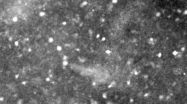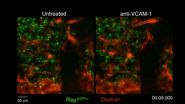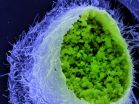(Press-News.org) LOUISVILLE, Ky. - An international team of researchers including Jon Klein, M.D., Ph.D., and Michael Merchant, Ph.D., of the University of Louisville has identified a protein that turns a person's immune system against itself in a form of kidney disease called membranous nephropathy (MN). The findings are published online in the New England Journal of Medicine.
This is the second protein associated with MN and the development of an autoimmune response.
Through the identification of this second protein, a new blood test can be developed to diagnose this common form of kidney disease.
Unchecked, MN can lead to kidney failure, or end stage renal disease. In 2011, more than a million people worldwide suffered from kidney failure annually, with more than 570,000 in the United States. Approximately 14 percent of those cases are the result of glomerulonephritis of which MN is a common cause.
"Five years ago this team initially discovered a protein that has led to a blood test identifying between 70 and 80 percent of people with MN," said Klein, vice dean of research at UofL's School of Medicine. "We now have found another protein that impacts up to another 5 percent of patients with MN. Once a blood test is available, we will have been able to reduce the number of kidney biopsies necessary for disease detection and to assess the response to treatment by up to 85 percent."
Membranous nephropathy occurs when the small blood vessels in the kidney that filter wastes from the blood become inflamed and thickened. As a result, proteins leak from the damaged blood vessels into the urine. For many people, loss of these proteins eventually causes signs and symptoms known as nephrotic syndrome.
In 2009, Klein and this team reported the discovery that antibodies to kidney expression of phospholipase A2 receptor 1 (PLA2R1), were diagnostic for MN. That work, also reported in the New England Journal of Medicine, led to an FDA-approved test to diagnose MN. The PLA2R1 antibody test is positive in 80 percent of patients with MN. This week's disclosure is related to the protein THSD7A. Researchers examined the blood of people known to have MN. Of the 154 people studied, 15 had antibodies to THSD7A, but not PLA2R1.
"This is significant because it provides us with another marker of identification and enables us to lessen the physical burden on our patients and ultimately will decrease the need for kidney biopsy. These MN antibody tests also allow us to monitor disease activity without kidney biopsy as we treat the patient. This allows a more rapid approach to developing new therapies for MN," Klein said.
As pointed out by senior author Gérard Lambeau, Ph.D., director of research at Centre National de la Recherche Scientifique and Université de Nice Sophia Antipolis, Valbonne and team leader at the Institute of Molecular and Cellular Pharmacology (Sophia Antipolis), "This week's disclosure is related to the discovery of the protein THSD7A and the corresponding anti-THSD7A autoantibodies in a group of about 10 percent of MN patients who did not have anti-PLA2R1 autoantibodies."
"The discovery of this second antigen-antibody system in membranous nephropathy will allow clinicians to diagnose this new form of primary (autoimmune) membranous nephropathy and provides a new method to monitor the disease activity in this subgroup of patients," said co-lead authors Nicola Tomas, M.D. of University Medical Center Hamburg-Eppendorf and Laurence Beck, M.D., Ph.D., of Boston University School of Medicine.
INFORMATION:
Catherine Meyer-Schwesinger, M.D., Barbara Seitz-Polski, M.D., Hong Ma, Ph.D., Gunther Zahner, Ph.D., Guillaume Dolla, M.S., Elion Hoxha, M.D., Udo Helmchen, M.D., Anne-Sophie Dabert-Gay, Ph.D., Delphine Debayle, Ph.D., David J. Salant, M.D., and Rolf A.K. Stahl, M.D., are part of the research team.
In addition to the online version of the New England Journal of Medicine, the findings recently were presented at the American Society of Nephrology Kidney Week 2014 in Philadelphia.
ANN ARBOR, Mich. - Most parents agree that all children in daycare centers should be vaccinated, and that daycare providers should be checking vaccine records every year, according to the University of Michigan C.S. Mott Children's Hospital National Poll on Children's Health.
All states require vaccines for children who attend daycare, but those requirements may not include every vaccine from birth to age 5 years. As a result, some children still don't receive all recommended vaccines--leaving daycare providers and parents to decide how to handle the situation of a child ...
Minneapolis, MN - November 16, 2014 - Researchers from Allina Health and the Minneapolis Heart Institute Foundation have presented on the results and implications of The Heart of New Ulm Project on heart disease risk factors at the American Heart Association Scientific Sessions in Chicago, Ill.
The Heart of New Ulm is a 10-year community intervention aimed at reducing the rate of modifiable cardiovascular disease risk factors in a rural community through interventions delivered through clinical, worksite, and broader community settings with goals of improving lifestyle ...
A study by Hospital for Special Surgery (HSS) researchers finds that body mass index (BMI) plays a role in rheumatoid arthritis (RA) patients' ability to achieve a sustained remission. Looking at patients who had received an RA diagnosis within the past 12 months, investigators found that those who were significantly underweight or overweight/obese were the least likely to remain in remission.
The study, titled, "Very Low or High Body Mass Index Negatively Affects Patients' Ability to Achieve Sustained Remission in Early RA in a Multicenter Canadian Cohort," was presented ...
When you think of hip replacement surgery, you generally envision an older adult with painful osteoarthritis. But the procedure is also used for younger patients with juvenile idiopathic arthritis (JIA) whose joints have been severely damaged by the disease.
A new study by Hospital for Special Surgery (HSS) researchers finds that total hip replacement (THR) is an excellent option for patients under age 35 when conservative treatments fail to provide relief.
The study, presented at the American College of Rheumatology annual meeting on November 16, found that hip replacement ...
Physicists have engineered a spiral laser beam and used it to create a whirlpool of hybrid light-matter particles called polaritons.
"Creating circulating currents of polaritons - vortices - and controlling them has been a long-standing challenge," said leader of the team, theoretician Dr Elena Ostrovskaya, from the Research School of Physics and Engineering at The Australian National University (ANU).
"We can now create a circulating flow of these hybrid particles and sustain it for hours."
Polaritons are hybrid particles that have properties of both matter and light. ...
CHICAGO and BOSTON - Nov. 16, 2014 - The Harvard Clinical Research Institute (HCRI) announced today results of the DAPT Study, a major international study that investigated the duration of dual antiplatelet therapy (DAPT, the combination of aspirin and a thienopyridine/antiplatelet medication to reduce the risk of blood clots) following coronary stent implantation. The continuation of dual antiplatelet therapy beyond one year resulted in significant benefits compared with aspirin alone, including reducing the rare but serious problem of stent thrombosis and preventing heart ...
Leading coral reef scientists in Australia and the USA say there needs to be a new approach to protecting the future of marine ecosystems, with a shift away from the current focus on extinction threat.
"Extinction is the final endpoint, but coral reefs are in deep trouble long before we get to that point. We need to take action much earlier," says Professor David Bellwood from the ARC Centre of Excellence for Coral Reef Studies (Coral CoE) at James Cook University.
"The goal should be to maintain reefs that can support corals, fish and humans" Professor Bellwood says.
In ...
VIDEO:
The neurons in this video contain a dye that fluoresces when it encounters calcium ions. When the neuron is excited, calcium floods into the cell and the neuron fluoresces. The...
Click here for more information.
Synapse, the name for the signal-receiving site on a neuron, comes from the Greek word for contact. Neuroscientists used to maintain that neurons form one-to-one relationship to contact one another. Yet more researchers are finding evidence that shows how neurons ...
VIDEO:
The movement of bone marrow B cells was limited in the absence of VCAM-1, as shown in this time-lapse video. B cells (green) were tracked before (left) and after (right)...
Click here for more information.
Newly formed B cells take the easy way out when it comes to exiting the bone marrow, according to a study published in The Journal of Experimental Medicine.
For infection-fighting T and B cells to defend the body, they must first leave their birthplace--the thymus for ...
This news release is available in German.
Infections due to the sexually transmitted bacterium Chlamydia trachomatis often remain unnoticed. The pathogen is not only a common cause of female infertility; it is also suspected of increasing the risk of abdominal cancer. A research team at the Max Planck Institute for Infection Biology in Berlin has now observed the breakdown of an important endogenous protective factor in the course of chlamydial infection. By activating the destruction of p53 protein, the bacterium blocks a key protective mechanism of infected cells, ...






